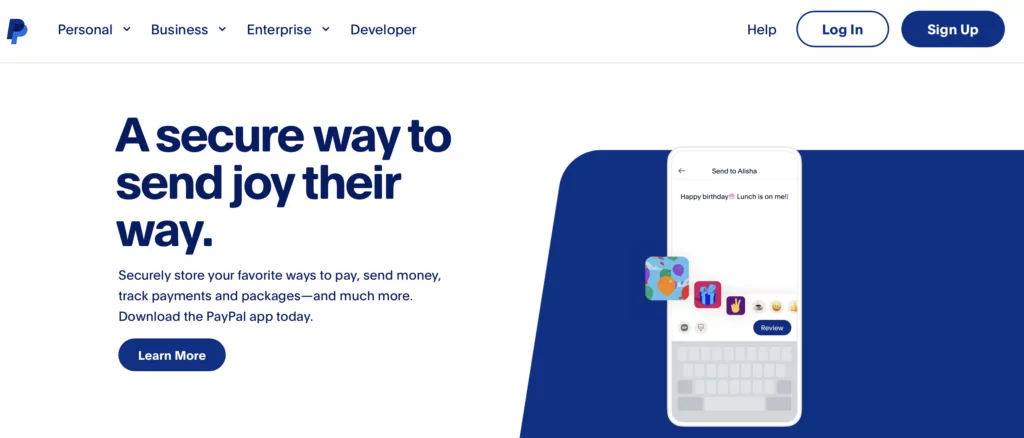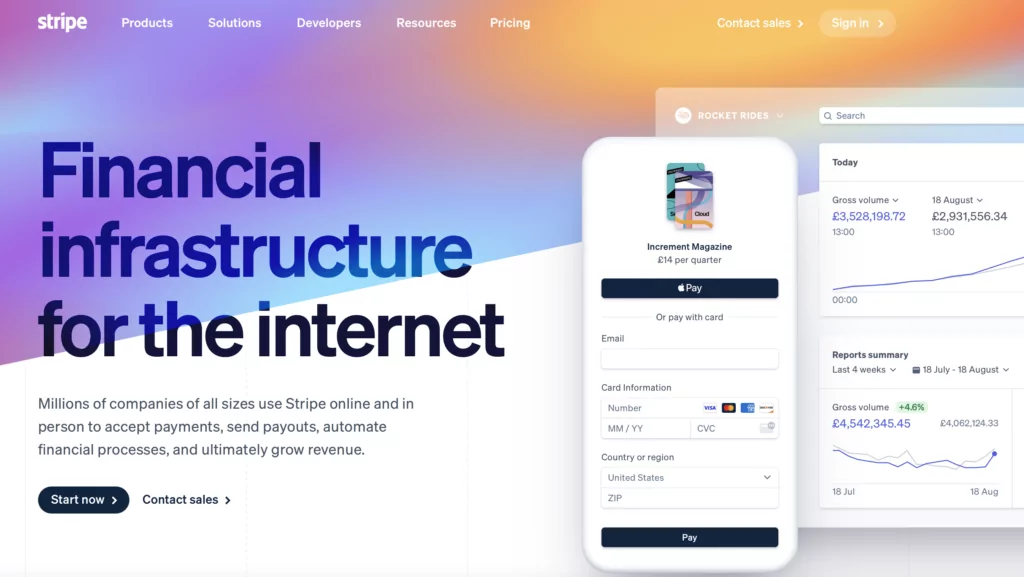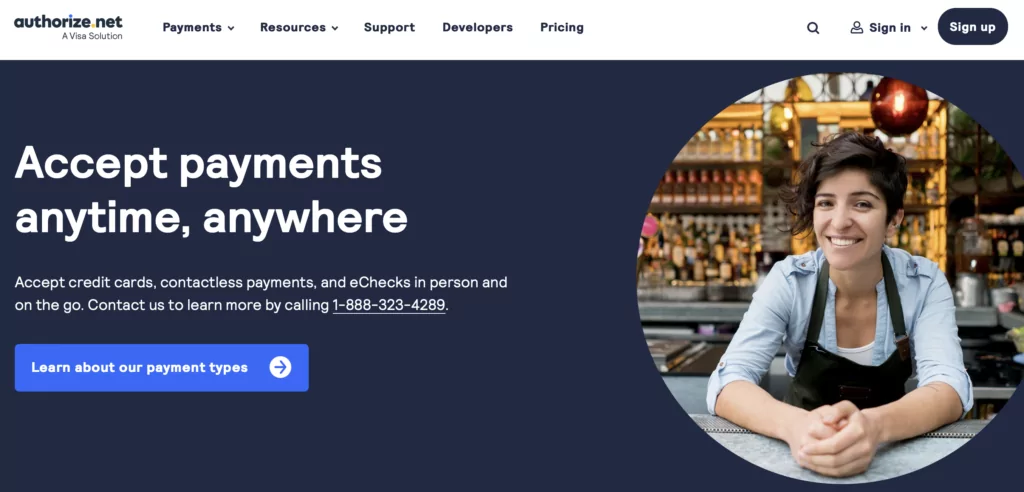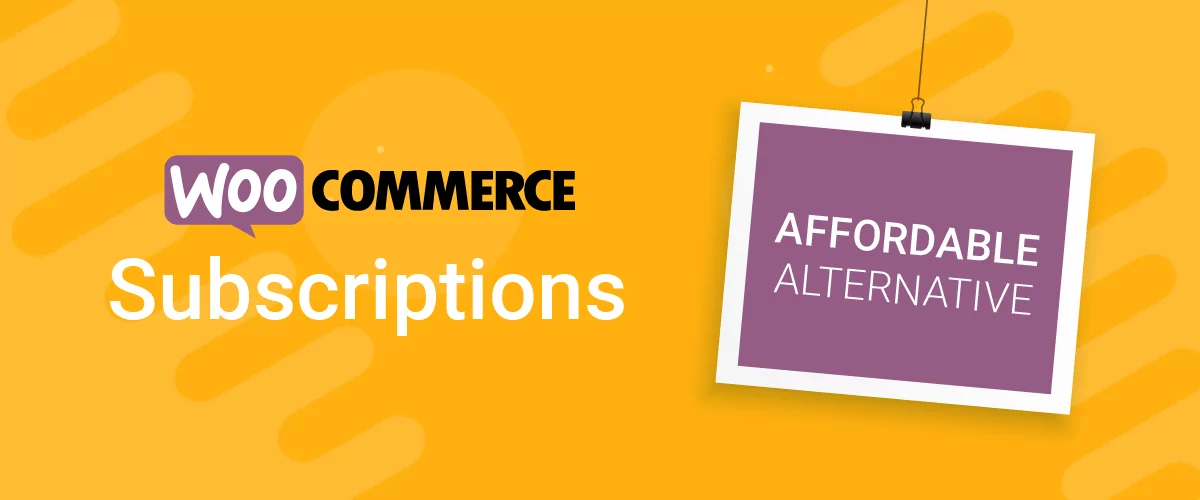
Table of Contents
A payment gateway enables you to accept online payments from customers. However, the best payment gateway for small business will be affordable, secure, and support a wide range of payment types. But with so many to choose from, it can be difficult to find the right one for your store.
Fortunately, it’s easier to find the best payment gateway for your small business when you know what to look for. For example, you might want an option with low transaction fees to reduce overhead costs. Or, if you sell internationally, it’s important to find a payment gateway that supports multiple currencies.
In this post, we’ll discuss some factors to help you choose a payment gateway. Then, we’ll help you find the best payment gateway for small business. Let’s get started!
How to Choose a Payment Gateway for Small Business
It’s important to choose the right payment gateway for your business since it can effect the efficiency of transactions and contribute to the overall customer experience. Here are some key factors to consider when choosing the best payment gateway for small business:
- Transaction fees. Most payment gateways charge a fee for each transaction. However, the fee structure will help you evaluate the effect on your profits. For instance, if you have high transaction volumes, tiered or volume-based pricing can reduce costs.
- Payment methods. It’s important to make sure your payment gateway supports payment methods that are preferred by your target customer. This can include credit/debit cards, cryptocurrencies, or digital wallets.
- Security. To protect sensitive data, make sure your payment gateway provides encryption and tokenization. Additionally, it’s a good idea to check that it’s PCI compliant. Meanwhile, some providers will even provide built-in fraud detection tools.
- Global transactions. If you sell products globally, you’ll need a payment gateway that supports multiple currencies and international payment methods.
- Customer support. The best payment gateway for small business will offer 24/7 support. This way, if something goes wrong, you can resolve the issue quickly without hindering your ability to accept payments.
- Integration. It’s important to make sure your payment gateway integrates with your existing ecommerce platform and other systems.
All factors considered, you’ll be in a better position to choose the best payment gateway for your small business.
5 Best Payment Gateways for Your Small Business
Now that you know what to look for in a payment gateway, let’s take a look at some of the best payment gateways for small businesses.
1. PayPal

PayPal is one of the most well-known payment gateways so it provides an added level of trust with customers. Meanwhile, you can accept payments instantly, and eligible businesses can even access the Seller’s Protection Program (great if you sell high-ticket items).
Additionally, PayPal provides variable transaction fees so it can make a great choice for businesses on a budget. However, it isn’t the best option for global businesses.
This is because PayPal charges an extra 1.5% transaction fee for international payments. What’s more, the transaction fee is not refunded if customers return their items.
PayPal also makes an excellent payment gateway for membership websites. If you use Paid Member Subscriptions, you can add a WordPress payments plugin to your website to set up a recurring revenue stream.
Paid Member Subscriptions is a powerful plugin that allows you to create a membership site and manage subscription plans:
Paid Member Subscriptions Pro
Accept (recurring) payments, create subscription plans and restrict content on your website. Easily setup a WordPress membership site using Paid Member Subscriptions.
Get Paid Member SubscriptionsOnce you’ve installed the plugin, all you need to do is create a PayPal account and enable PayPal IPN. Then, you can activate the Recurring Payments for PayPal Standard and PayPal Express add-ons.
PayPal Pricing
PalPal’s prices differ according to the country of origin and the payment method. You can find a full list of merchant fees here. But to give you an idea, standard credit/debit payments in US dollars will face a 2.99% transaction fee plus a fixed fee of 0.49 USD.
2. Stripe

Stripe is an all-in-one payment solution that also enables you to set up a merchant account. Better yet, you can use Stripe to create a hosted payment page or seamlessly integrate Stripe into your website.
If you proceed with the latter option, you can view sales in a dedicated Stripe dashboard where you can manage payments, refunds, and disputes. Plus, it makes a great option for membership websites using the premium Paid Member Subscriptions plugin.
Once you’ve created a Stripe account, you can set Stripe up on your membership website by going to the Add-Ons page. Upon successful activation of the Stripe add-on, you can configure Stripe payments in the plugin’s settings.
Better yet, Stripe may be the best payment gateway for businesses that sell products worldwide. This is because Stripe supports over 135 currencies and offers a comparatively lower EU transaction rate (1.5%).
However, the rate for non-EU cards is slightly higher so it will cost more to sell items across continents. Plus, it’s not the best for businesses that require fast payments since it can take up to a week for the money to hit your bank account.
Stripe Pricing
Stripe charges a 2.9% transaction fee plus 30 cents while international cards face an extra 1.5%.
3. Square

Sqaure is probably best known for its POS system which enables you to accept payments in person. This makes it a great choice for small businesses that also have a brick-and-mortar store.
However, Square also provides a sophisticated payment gateway with lots of built-in tools. For instance, you can create invoices and set up subscriptions. Meanwhile, you’ll find useful customer relationship tools and inventory management solutions.
Square also offers numerous integrations and add-ons. Plus, there’s a huge selection of APIs so that you can customize the payment gateway to suit your exact needs.
Better yet, you can access Buy Now Pay Later options for in-person and online transactions. And, you won’t be subject to monthly minimum transaction volumes, making it a good option for startups and small businesses.
Square Pricing
Square pricing varies based on payment method. However, the standard processing fee is 2.6% plus 10 cents.
4. Google Pay

Google Pay lets you accept digital payments quickly and easily with the Google Pay app. The money goes directly to your individual current account. And, there’s no fees involved whatsoever (unless your bank charge fees or impose requirements).
Better yet, Google Pay is becoming increasingly popular with customers. For instance, two in ten people in the UK have used Google Pay in person (and online) between 2022 and 2023. Additionally, Google Pay is used regularly for in-person sales in Switzerland and India.
You can use the app’s custom business channel to help customers discover your small business. Plus, with Google Pay Shield, you’ll get 24/7 security to detect fraud, prevent hacking, and verify identities.
Google Pay Pricing
The Google Pay app (and the API integration) are free, but you’ll still pay processing fees to your preferred payment processor.
5. Authorize

Authorise provides a security-focused payment gateway for small businesses. It’s owned by Visa and offers merchant accounts from its network of partnership banks.
You can either proceed with the payment gateway option (if you already have a merchant account). Or, choose the all-in-one option to set up a merchant account.
Better yet, Authorize places a strong emphasis on security including an address verification service (AVS) and card code verification (CW2) to help prevent e-commerce fraud. Plus, you can expect total PCI compliance.
Authorize Pricing
The all-in-one option (with a merchant account) will cost you $25 a month with a transaction rate of 2.9% plus 30 cents.
Conclusion
A payment gateway is required to accept and authorize payments on your website. However, the best payment gateway for a small business will be easy to set up, affordable, and support popular payment methods.
To recap, here are five of the best payment gateways for your small business:
- PayPal: The best payment gateway for businesses on a strict budget.
- Stripe: A great option for membership websites or those selling internationally.
- Square: An excellent solution for businesses with low transaction volumes or those with physical stores.
- Google Pay: Enables you to accept digital payments through the free app or API.
- Authorize: A total out-the-box option with plenty of security features.
Do you have any questions about how to choose the best payment gateway for a small business? Let us know in the comments below!
Related Articles

How to Set Up WooCommerce Recurring Payments
Can't figure out how to set up WooCommerce recurring payments for your business? You aren't alone. Building a subscription business is daunting, especially if it's your first time. There are many moving parts at any given time. Whether it's laying the foundation, creating content, marketing your membership site, or managing payments, there are plenty of […]
Continue Reading
Best WooCommerce Subscriptions Alternative: Paid Member Subscriptions, a More Affordable and Complete Solution
Are you looking to sell subscription products on your WooCommerce site? One of the most popular ways to sell subscription products in WooCommerce is with the WooCommerce Subscriptions plugin. It lets you create WooCommerce products with recurring payments as a way to offer subscriptions to your customers. While this is an official extension from WooCommerce, […]
Continue Reading
Subscription Business Ideas: 10 Ways to Make Money in 2025
Are you after brilliant subscription business ideas to spark your imagination, get your creative juices flowing, and make money in 2024? If that's a yes, you came to the right place. The subscription-based business model has gained tremendous popularity in recent years. According to a report by Statista, e-commerce sales via the subscription model in […]
Continue Reading

